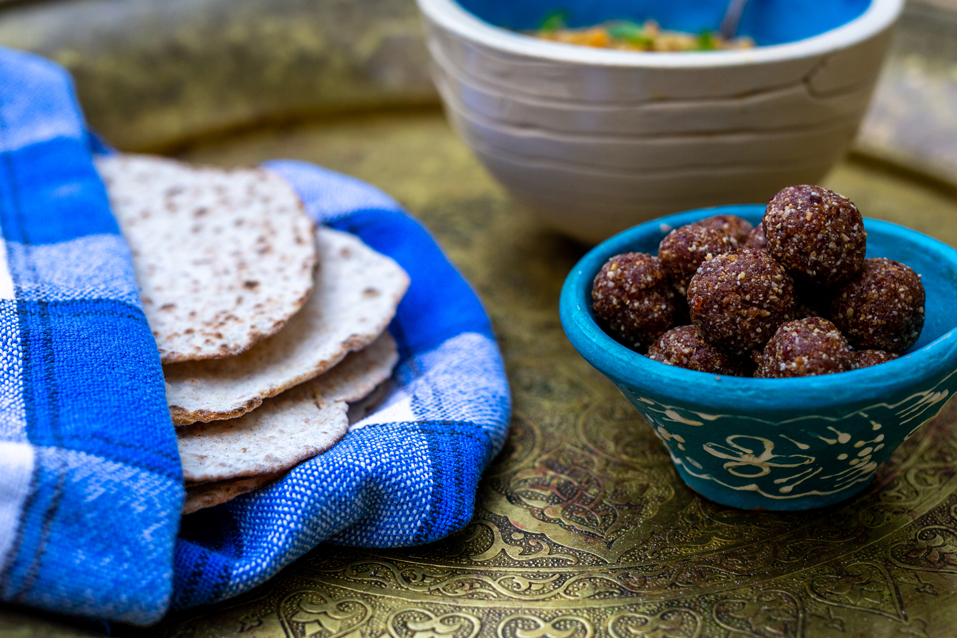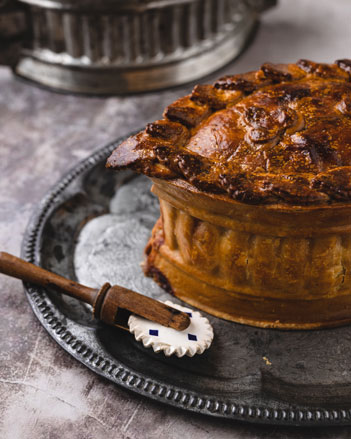Large piles of food on a table, big joints of meat packed together, birds hanging at a butcher’s shop, dozens of jugs with beer and wine, baskets full of fruits and a heap of different breads and cakes. Ancient Egyptian art has no limits when it comes to food. The hot and dry conditions in Egypt preserved many food related art items, and even actual food, perfectly.
Food on the wall
There are thousands of food images on ancient Egyptian tomb walls, plenty of scrolls of hieroglyphic writing like the Book of the Dead, many sculptured models of- for example bakeries and breweries – that show food preparation, and lots of real preserved food. Not only grains, legumes, dried fruits, herbs and spices are discovered in tombs and temples, but also prepared food items. Jars of beer and wine, different kinds of baked loaves of bread and dried or salted meat and fish. Food was apparently so important that it was even worn as jewellery, such as a necklace of celery leaves. We learn a lot from these sources about the growing, production, collecting, preparation and eating of ancient Egyptian food.
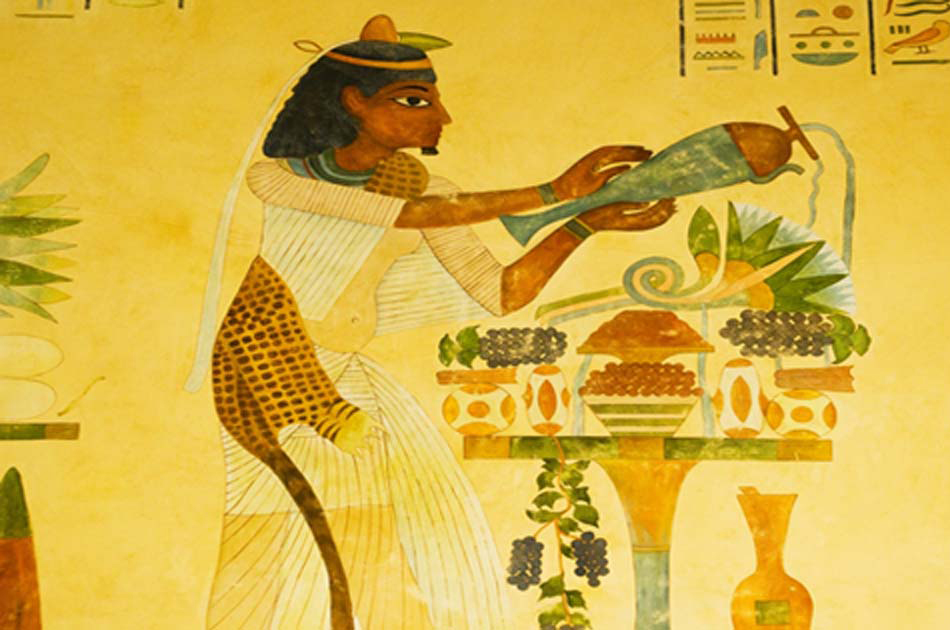
Ancient Egyptian food
A document from the New Dynasty with instructions to a court official listed foodstuffs needed to welcome the pharaoh and his entourage. It is a very good example of the variety of foodstuffs that was available in ancient Egypt. The list shows differents kinds of bread, including sweet pastries, flatbreads, heavy barley bread, rolls with sesame seeds and oatcakes. There are also different kinds of fish from canals, the delta, fishponds, pools and the floodplain. Preserved meats and offal, sheep, lambs, cattle, cows and bulls, some fresh, some dried and some salted. And with it comes cream and butter. Live and cooked geese, ducks, wild birds, pigeons and quails are added to the list as are 100 baskets of fruit, dried and fresh (figs, pomegranates), fresh vegetables, dried legumes (lentils, chickpeas, broad beans, peas), 100 handfuls of herbs, gourds, coriander, carobs, different kinds of oil, goose fat and various wines.
Ancient Egypt was a florishing nation, self-contained with the fertile floodplain of the Nile providing plentiful food and drink for the ruling classes and most of the time enough food for the lower classes. Although Egypt had food in plenty, it lacked wood, metal, and luxury goods like gold, precious stones, fragrances and spices. The Egyptians made trade expeditions to foreign nations to collect these, and many more, items. What did these travellers, often far away from the wealth at home, eat on their long journeys by boat or through desert? Unfortunately all those beautiful sources don’t tell us that specificly. Moreover, there isn’t a single ancient Egyptian recipe handed down to us!
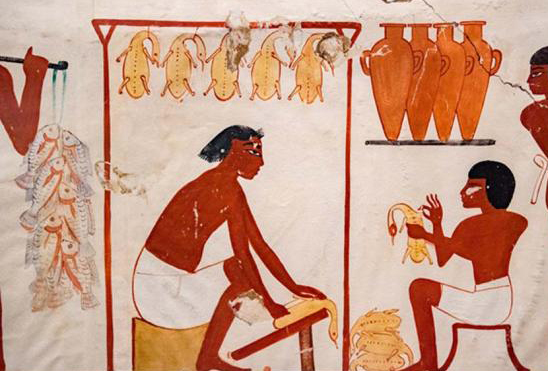
Travelling by boat
A well known trade expedition was the one queen Hatshepsut organised in 1493 BC to the land of Punt. It was depicted in reliefs at the walls of her temple in Deir el-Bahari. I’ve always been fascinated about this journey (I even named my cat Hatshepsut!). On one of the reliefs, it is said, the Egyptian expedition leader offers bread, beer, meat, fruit and other products to the royal family of Punt. It must have been preserved foods mostly. The ships, five are depicted on the walls, must have been loaded with food for this offer, and for feading the crew. Dried dates and figs, legumes and herbs, oatcakes, flatbread, dried and salted meat, oil, vinegar, beer and even live poultry were good travel companions on a ship. Expeditions along the Nile could probably find enough fresh food to add to their stock, like fish, fruit, ducks and geese.
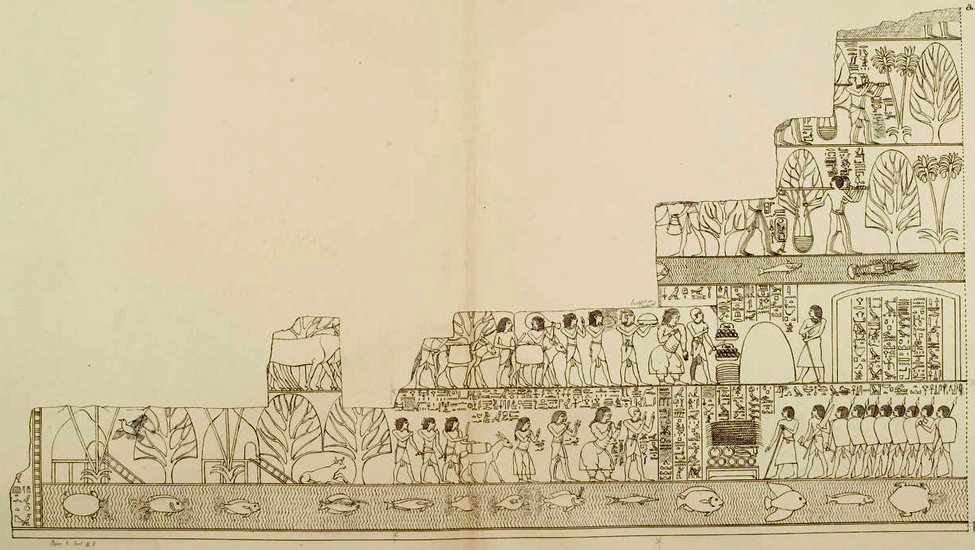
Travelling through desert
But what about travellers with their donkeys in desert areas? Their meals must have been plain and simple, like the ones we know from later periods in history. Especially preserved and dried food were suitable for travelling through the desert. Maybe the food was simple but grains, legumes and dried fruit made nutritious meals and can be a real treat. So let’s cook a travellers meal that has been eaten for centuries and even may have been eaten by the ancient Egyptians.

Flatbread
Flatbreads were baked on a hot stone or a metal plate that was heated in the fire. It still works perfectly!
Ingredients
10 oz/300 g whole wheat flour
6,5 fl oz/200 ml water or (donkey) milk
1 tsp of salt
2 tbsp sesame oil
Preparation
Put all the ingredients in a bowl and knead into a smooth dough. Let the dough rest for a while. Divide the dough into 10 portions. Flatten the dough with your hands into a circle (or take a rolling pin), as flat as possible. Bake the flatbreads in a non-greased pan on high heat until golden brown.
Lentil stew
Stews and soups were prepared in a pot that was put next to the fire or in a covered pit. Also meat was prepared that way.
Ingredients
2 tbsp ‘tomb herbs’ (dried seeds of cumin, coriander, fennel and dill)
2 handfuls of lentils
1 tsp salt
2 tbsp sesame oil
Preparation
Grind the seeds in a mortar. Put the lentils in a pan, add the grinded seeds, salt and some water untill the lentils are covered. Bring the water to a boil and after that let it simmer until cooked. Add the sesame oil to the lentils.
Sweets ‘good for travellers’
These kind of sweets were eaten for centuries. A recipe in a medieval cookbook from the Middle East says these are good for travellers.
Ingredients
2,5 oz/75 g almonds
3 oz/90 g dates
2 oz/60 g breadcrumb (stale bread)
2 tsp spices (optional)
3 tbsp sesame oil
Preparation
Roast the almonds until golden brown. Cut the dates into small pieces. Put the dates, breadcrumbs, nuts and spices in a mortar and grind. Add the sesame oil and mix until you have a sticky mixture. Then take a bit of the mixture in your hand and “squeeze” into a ball. You can keep them for a long time.
Eat your lentils with your home made flatbread and finish your meal with the sweets. Have a save travel!
This article was written for Ancient History Magazine.

